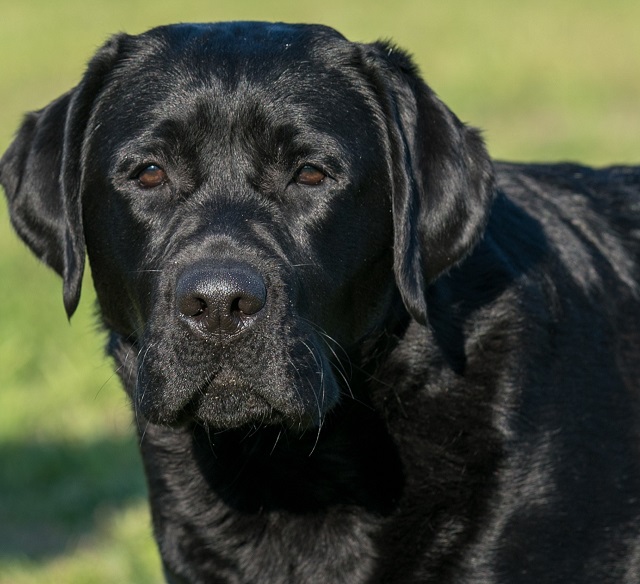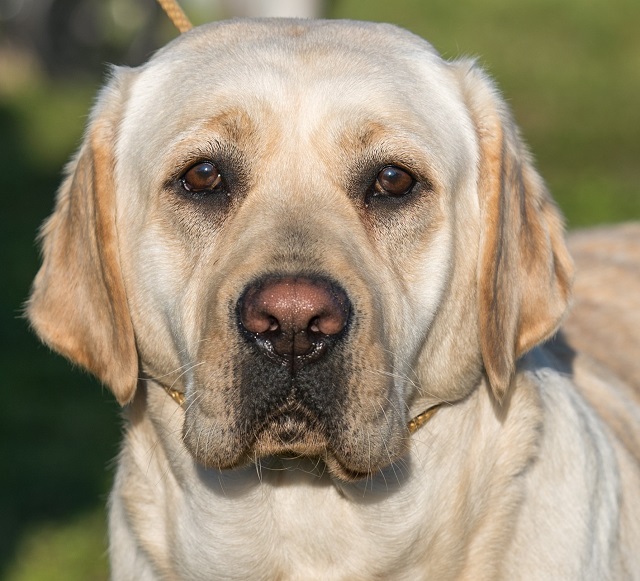
Coat Color Inheritance in the Labrador Retriever
Coat Color Inheritance in the Labrador Retriever
How we can help
Call 530-752-1393 to schedule an appointment with the UC Davis veterinary hospital small animal clinic.
Download PDF of this "Coat Color Inheritance in the Labrador Retriever" article
Labrador retrievers have coats of three basic colors: yellow, black, and chocolate. These colors are determined genetically, just like almost all of the traits that offspring get from their parents. The modes of inheritance of these coat colors are autosomal (not related to the sex of the dog). The information for black or chocolate comes from two versions of the same gene (different versions of a gene are known as alleles). This gene is different from the one that causes yellow hair.
BLACK OR CHOCOLATE?
The gene that determines if a Labrador Retriever is black or chocolate is Tyrosinase-related protein 1, or TYRP1 for short. There are four known alleles at this gene in the Labrador Retriever: one is the allele for black (designated as B) and three different alleles that result in chocolate (collectively designated as b). In determining if your puppies will be black or chocolate, the black coat color (B) is dominant to the chocolate (b). Therefore, a puppy will only be chocolate if each parent contributes a chocolate allele (bb). If one or both parents (Bb or BB) contribute the black (dominant) allele, the puppy will be black (BB or Bb), although a Bb puppy would carry chocolate and could therefore produce chocolate puppies.


WHAT ABOUT YELLOW?
The gene that determines if your Labrador puppies will be yellow is a different gene from the one that determines black/chocolate color and is known as melanocortin 1 receptor, or MC1R for short. There are several known alleles of this gene in dogs, but for Labradors the most common are E (produce black and brown pigment) and e (only produce yellow pigment). An e allele at the MC1R gene prevents expression of the black or chocolate color in the hair follicle and the puppy's hair ends up yellow. Interestingly, the black or chocolate pigment is still expressed in the skin, just not in the hair. In order to be yellow, a Labrador must have two recessive alleles of the MC1R gene (ee). This means both parents contributed a yellow allele (e). However, if only one (Ee) or no (EE) yellow-causing alleles are contributed, this puppy will be either black or chocolate depending on which alleles are present at the TYRP1 gene (see above).

Two yellow labs can only have yellow puppies (ee), since they both only have the yellow allele (e) to contribute to their offspring. Some black (BbEe or BBEe) and chocolate (bbEe) Labradors carry one copy of the yellow-causing allele (e). If they are bred to each other, there is a chance that some puppies will get a copy of e from each parent and have yellow hair (Bbee, BBee, or bbee).
HOW WILL I KNOW?
If you are interested in breeding your Labrador and would like to know the genetic make up of your dog to predict the color of your puppies, genetic tests are available. The UC Davis Veterinary Genetics Laboratory offers both the black/chocolate and yellow coat color tests for $65 per animal (https://www.vgl.ucdavis.edu/services/coatcolordog.php). The tests are easy, non-invasive, and simply require that you take a swab of the inside of your dog's cheek and send it to the laboratory.
*This article may not be reproduced without the written consent of the UC Davis School of Veterinary Medicine.
